|
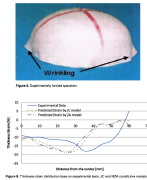 |
 |
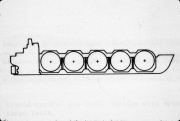 |
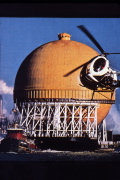 |
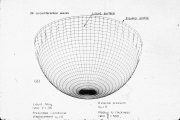 |
|
| TOP: A hydro-explosively formed torispherical specimen; BOTTOM: Comparison of thickness strain meridional distribution from test and theory |
|
| Hortonspheres at Karlsruhe MiRO petroleum refinery. Such shells can buckle in a general mode if they happen to develop a slight internal vacuum or in a local mode near the support system if they are partially filled, as demonstrated by the next 3 slides. |
|
| Here is a tanker with 5 huge Liquified Natural Gas (LNG) spherical storage tanks supported on skirts. One of those huge LNG tanks is shown in the next slide. |
|
| One of the huge LNG spherical storage tanks with a skirt support joined to it at its equator. |
|
| A local buckling mode that may occur in a partially filled LNG tank because of the development of local circumferential compression in the tank wall between the skirt support at the equator and the liquid surface somewhat below the equator. |
|
|
|
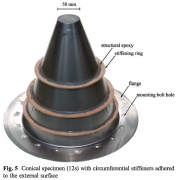 |
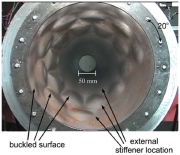 |
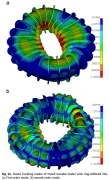 |
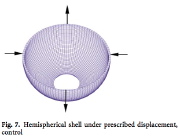 |
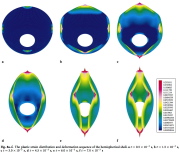 |
|
| steel conical shell test specimen with external rings |
|
| Buckled conical test specimen. |
|
| Buckling of externally pressurized ring-stiffened toroidal shell |
|
| Free-edged hemispherical shell with oppositely-directed concentrated loads at the equator |
|
| Large deformations of the free-edged hemispherical shell shown in the previous slide |
|
|
|
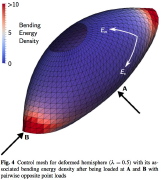 |
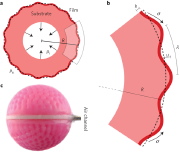 |
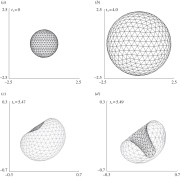 |
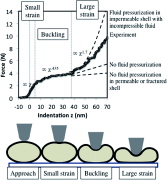 |
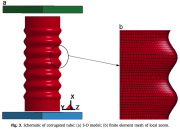 |
|
| Pinched hemispherical shell with a free edge |
|
| Wrinkling of a thin film on a shrinking spherical substrate |
|
| Cavitation (invagination) of a nano-spherical shell |
|
| Crushing a spherical nanoparticle with an indenter |
|
| Corrugated tube under axial impact and energy absorption |
|
|